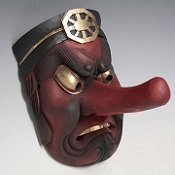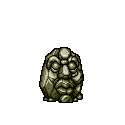|
RocknRollaAyatollah posted:CoC benefits from not having Sandy Petersen or whoever rewrite every book at the last minute too. It's helped as well by being a game that doesn't use the new toy gimmick like Rifts does because the players are assumed to be fragile and to die easily. And to be fair to Derleth, his Lovecraftian stories fit the formula of a roleplaying scenario far better than many of Lovecraft's own stories, his shaky grip on the concept of cosmic horror notwithstanding. That is, a typical Derleth story will involve a clue, a haunted remote location, and then a rush to either perform a ritual or stop a ritual to prevent some terrible cataclysm. Not entirely surprising from a guy whose primary work was regionalist fiction and Sherlock Holmes pastiche.
|
|
|
|

|
| # ? Apr 16, 2024 22:54 |
|
I'm not a huge fan of CoC the game, at least the 5th edition (the only rulebook I've owned), but there's something to be said for a setting and rulebook where the atmosphere of play is actually considerably enhanced by players not being familiar with everything inside the book. Sadly, Lovecraft stuff is so saturated in nerd pop culture that you can't really take advantage of that. But the idea of 'Hey, it's actually better if you know nothing about what you're getting into going in' is a strength for an RPG.
|
|
|
|
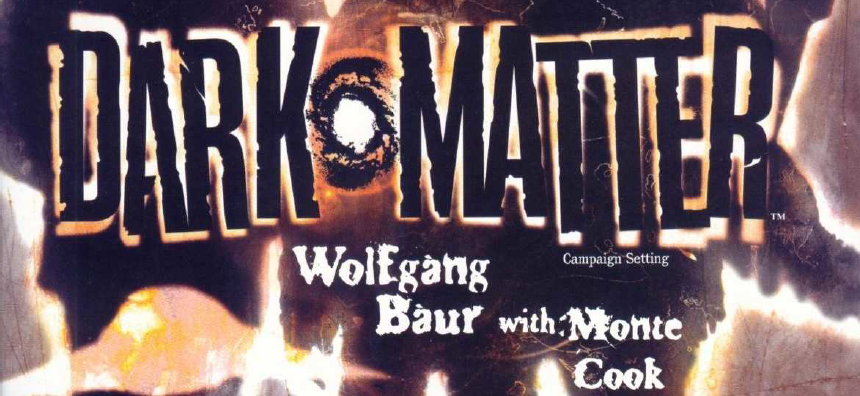 Chapter 8: Xenoforms - Homunculus thru Man in Black 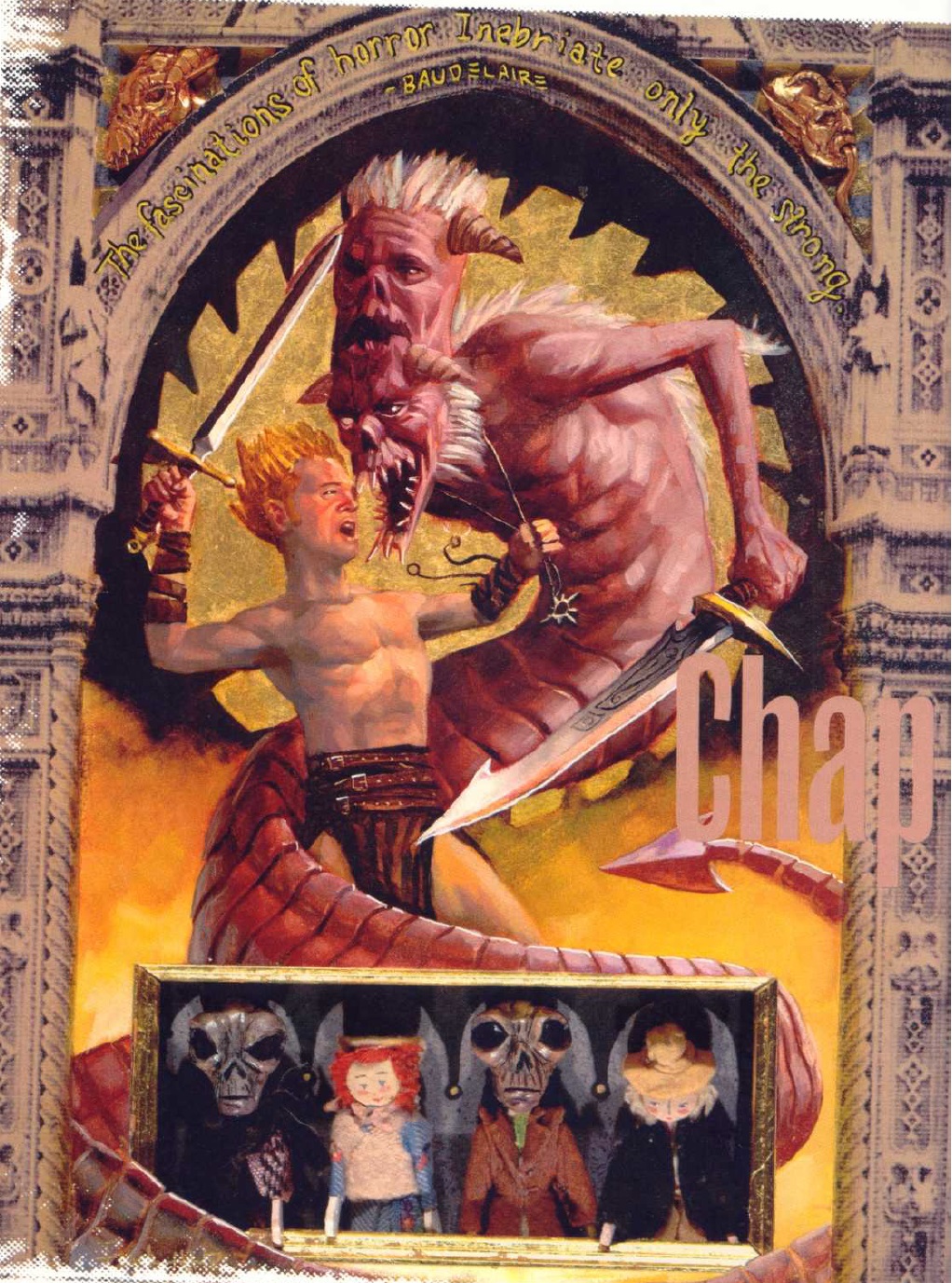  What aspiring wizard hasn't dreamed of growing their very own shitgoblin? HOMUNCULUS Description: These horrible little garbage monsters are created via the Hermetic school of Arcane FX (which we covered in Chapter 4). They aren't naturally occurring or indigenous to anywhere, so if you see one you know there's somebody nearby playing with the occult. They aren't very intelligent and they have limited decision making powers, so they basically follow whatever literal commands they were given and tend to flee if they encounter anything that would prevent them from actually completing their task. Sometimes the creating sorcerer fucks up and the homunculus goes rogue and develops rudimentary free will, but they still have the same abysmal game stats so actually causing trouble for their creator would require enlisting the help of more capable associates. My Take: They're understandably pathetic and weak, and they're not really going to be around unless someone created them. More of a piece of set dressing than an actual encounter that investigators would have to engage with.  KINORI Description: You know 'em, you love 'em, they're the most benevolent Strangers humanity has ever encountered - the Kinori! They've basically asked for little more than to be humanity's chill wizard mentors, and even though they possessed arcane talent far in advance of what we knew, they never once attempted to use it to dominate us or turn us into a client species. It's actually a pretty neat twist that the Reptilians of the setting are actually chill AF and aren't in charge of any global conspiracies. Of course the Greys hate the "1 weird trick to subvert your intergalactic oppressors" that the Kinori attempted to teach humankind and have gone to great lengths to exterminate the Kinori whenever the two species encounter each other. Rarely, Blackscale Kinori get hatched in a clutch and they're all super wizards with even more innate Arcane power than normal Kinori and all of the regular Kinori are eminently subservient to them and they Blackscale typically end up living lives of considerable luxury as leaders of their warren or tribe. My Take: Kinori are bong wizards that want to be our friends. They're closer in size to a Grey than to a human and they innately know Arcane FX spells and helped to co-create the entire school of Hermetic FX along with our earliest ancestors. Millenia of persecution by Greys and Grey-sponsored humans have driven them deep underground, and they'll defend their warrens fiercely against any uninvited guests (since history has proven that intruders only ever want to kill them) but if an investigator could encounter one outside a warren it wouldn't be impossible to strike up a friendship. The book doesn't really insinuate that you could run a Kinori as a PC but I think if Greys are potential characters because they can use psychic powers to broadcast an illusion, Kinori should be equally able to masquerade with some type of ritual spell or whatever. 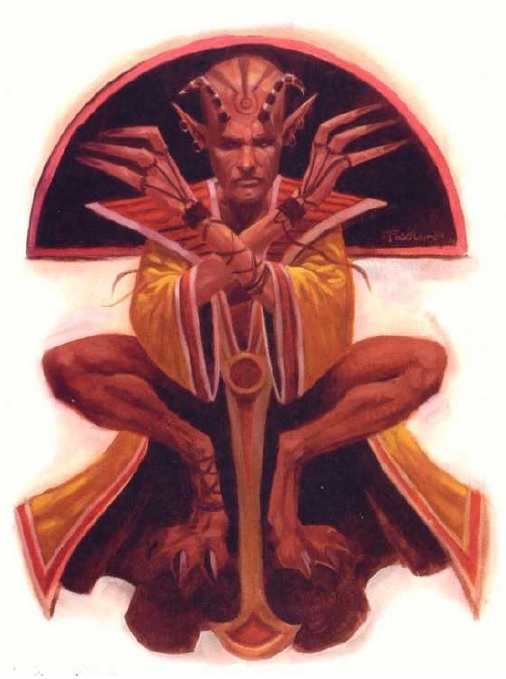 The original source material for the cartoon devil with a pitchfork. LUCIFERAN Description: Another Stranger species that seems to have originated from the same home dimensions as the Elohim. The book says "seems to" because any time the Elohim encounter a Luciferan, they will go to any length to ensure the creature is destroyed, and this implies there must be some kind of shared history there. Luciferans remind many humans of the stereotypical Christian concept of a Demon but they aren't the same thing (because we know Demons already exist in-setting). They also seem to have innate familiarity with the futuristic technology that the Elohim wield, although it is rare that a Luciferan is able to acquire said technology without dying first. Luciferans also possess an innate affinity for the Enochian school of Arcane FX, which runs contrary to what humans might expect at first blush (since Enochian is nominally the "Good Guy" school of Arcane FX), although it's unknown what kind of vows they would make to power their spells (or indeed, what entity would be enforcing those vows). Luciferans rarely deign to speak to or interact with humans, so they're mostly a mysterious refugee species that may or may not be fleeing to Earth to avoid Elohim extermination squads back in their home dimension. My Take: They look like devils but they're aliens and they innately can use the "Good" Arcane FX. I feel like Bauer and Cook didn't put a lot of effort into this one; they basically played lazy contrast to expectations and called it good. It's starting to get a little frustrating that all of these alien species are described as "not wanting to interact with humans" because it feels like a cop-out so that they didn't have to bother with creating actual background information for each race. I get it, the setting meta-plot is already fleshed out with two different alien species; my point is, why even bother including another low-effort entry? .jpg) Do you hear Will Smith's song or Johnny Cash's song in your head when looking at this picture? MAN IN BLACK Description: There's two kinds of Men in Black - typical human beings that operate as agents of clandestine organizations and attempt to maintain a low profile while conducting some kind of nefarious task, and a specific type of Stranger that possess otherworldly powers; this entry specifically covers the latter. These Stranger MiB typically appear in pairs and tend to turn up anywhere on Earth where some kind of paranormal or extraterrestrial activity has occurred. They seem most interested in interrogating witnesses into silence and confiscating any obvious evidence left by the event, but other than acting to aggressively cover-up whatever just happened, they don't seem to have any long term plans or belong to a coherent organization with verifiable goals. It's not even clear whether there are multiple Stranger MiB or whether it's one entity that seems to manifest when specific criteria have been met; theories abound that the Stranger MiB might actually be the white blood cells of our collective unconscious, manifesting directly whenever something has occurred that humanity is unprepared to deal with. My Take: Stranger MiB don't have attributes or skills that wildly surpass a stock human (although they do tend to get 3 actions per combat round) but they make up for it by effectively intimidating or frightening people into submission. They innately have access to both Psionic and Arcane FX and even have two of their own special FX spells that allow them to summon supernatural spheres of darkness (a la the Darkness spell from D&D) and teleport between shadows (also functionally identical to the equivalent D&D spell) and while they could easily overwhelm the average person, a party of investigators would likely be able to defeat them in combat (provided the MiB didn't just teleport away when near death). The Stranger MiB are more intended to be used as tools of uncertainty and confusion, and work best when the investigators are also regularly dealing with normal humans that adopt the same affectations, so that the players are kept off balance about whether the MiB are real people or something Stranger. NEXT TIME: Magical homeless people and Egyptian royalty.
|
|
|
|
ProfessorProf posted:Paitent Style I wonder if the intent is that your pool of numbers carries over into your next stance? So you sit in this for a while and then switch out to use all the actions you've built up? I dunno if the rules work that way. I wish this game was out, it looks great.
|
|
|
|
Nessus posted:I didn't know that about the CoC RPG material in Japan. I was wondering how all that kept getting into their pop media. I guess now I know. quote:I think CoC has a couple other playability benefits. One thing that differentiates CoC from almost all other RPGs is the near total lack of player facing subsystems to tinker with. There's no crafting, no mecha design, no space combat systems, no poring over a thousand feats and prestige classes, no buying enhanced cyberwear or tricking out your deck, no domain management - it's just you, your character sheet, and the GM behind his screen with notes (this also gets rid of most of the minmax/balance issues that many other games face). The game also isn't built for long-term campaign play - one-shots and short campaigns are the way to go. There's very little character advancement or leveling up, so you don't really get too upset when your PC get eaten by shoggoths or whatever (ease of character creation helps with this, too). Finally, the game has a very well-defined style of play (just like D&D has its dungeons), so you can sell pre-made scenarios and have them be relevant to CoC GMs and players, which is a sharp contrast to so many 1990s games which struggled (after a zillion pages painstakingly defining their setting and factions and history and everything) to actually explain what PCs were supposed to do. I dunno. I just think it's remarkable that the game is 1) almost 40 years old, 2) has been ticking along like clockwork (with updated editions and new products) for almost that entire 40 years, and 3) has had that level of success despite doing things the opposite of what so many subsequent RPG lines have done. It must be doing something right, something worth looking into. Nessus posted:About the only change I'd make would be to rename SAN to Psyche or something since it is in fact "mental hit points".
|
|
|
|
I like the idea that all MiBs are the same entity who is growing increasingly pissed about his ever growing caselod
|
|
|
|
Barudak posted:I like the idea that all MiBs are the same entity who is growing increasingly pissed about his ever growing caselod an intergalactic intelligence that's perpetually 1 week away from retirement and is too old to deal with this poo poo but got assigned planet Earth as its final case and damnit it's going to crack this case if it has to intimidate every last human being into a silent stupor.
|
|
|
|
In 14 billion years of existence, Nyarlathotep has never seen this much paperwork.
|
|
|
|
"Don't you worry now," said the Man in Black, "your boy will be right as rain. He's a tough one, and by the time he's back in school the kids will be clamoring to hear about the swamp gas explosion he saw. I've got to file my report now but you see anything like that again you just call us and we'll get some folks out here to see to it." The woman nodded, relief on her features so recently wracked by worry. The man turned away and started walking back to his car and pulled out his book of reports and began writing furiously. With each step he took the notes got more distracted, starting at the top with neat handwriting saying "Exposed Humans: 2, female parent and male offspring" to the chicken scratch "Cause: Residue from rupture in parallel space of the dreaming". By the time he returned to his car he was, perhaps not fully aware, idly writing over and over again on the margins of the page "Only 1,000 years to retirement"
|
|
|
|
Halloween Jack posted:To be fair, Chaosium screws the pooch at least half the time when they try to add to the literary canon. Robert M. Price is good but some of the original fiction in their anthologies is just dogshit. Yeah, they're far from perfect but they're kind of the coelacanth of RPG's. RIFTS is the panda of RPG's, a beloved spectacle to some that's being kept on life support despite its inability to adapt to the modern world. The reason why Cthulhu is popular in Japan is because most of the major books are translated into Japanese and readily available. It's kind of hard to break into a market when you only release a book or two through licensing agreements and then write off the country. Outside of domestic offerings, CoC was probably the most prevalent foreign RPG that was still in print and offered official domestic supplements, a Sengoku Era book and a Taisho/Early Showa one. Most of the other foreign stuff that wasn't recent, like BattleTech, at Yellow Submarine were expensive because they were rare and low print numbers. The Taisho/Showa Era book was also relatively affordable, about $35 for a softcover, standard size CoC book.
|
|
|
|
megane posted:I wonder if the intent is that your pool of numbers carries over into your next stance? So you sit in this for a while and then switch out to use all the actions you've built up? I dunno if the rules work that way. Oh poo poo, that's totally it. So you get two or three turns worth of action dice, then roll over into Elder and unload all of them at once.
|
|
|
|
 ARCHETYPES And here we have the rules for the included archetypes in this edition of Unknown Armies! Some are new, some are old favorites revamped. Any missing archetypes are sometimes added in later supplements, or can be considered adaptable to the new rules with a minimum of work. THE CAPTAIN quote:The Captain is the person officially in charge, making it run and getting it done. The word captain comes from the Latin caput, meaning head. Much of the Captain’s work is done as and by the head. (Also sometimes in it.) The Captain is the leader of men. Not an army or nation, but a small core of loyal people. His men, his crew, his gang, or squad, or troop. The Captain leads their crew, and the crew follows the captain's orders loyally. The crew has a responsibility to respect, follow, and obey the captain, while the captain is bound to help their crew, build them, care for them, within reason. A Captain is not a distant administrator or out of touch bureaucrat, they are people of action. They earn their authority and respect with blood, sweat, and tears. Every avatar of the Captain must have their crew. THese crew are inducted and mystically bonded to the avatar by accepting his authority and the Captain accepting them as a subordinate. When someone joins a Captain’s crew, they are very literally bonded to the avatar, and the association can be seen in their aura and with other mystic senses. The Captain also gains some real control over them beyond that given through mere obedience. If the Captain also controls a vehicle of some sort: A ship, a tank, a plane, that vehicle can also be considered part of the crew for magickal purposes. An avatar of the Captain can have a crew of 1-2 people per tens place in their avatar identity, up to a maximum of about 20 people. PC’s can also join a crew, but come with all the complications as well. TABOOS The Captain cannot exercise his authority over a group larger than about 20 people, otherwise the distance messes with the close-knit nature of the captain and crew. An avatar of the Captain cannot stand idly in the face of any challenge to his authority. If it is insubordination from within the crew, or from someone of “Lesser” rank than the Captain, then the response must be immediate and unequivocal. If the challenge is from a higher power or authority then the Captain still must respond, but it doesn’t have to be immediate. But it can’t be forgotten or let go without breaking taboo. The Captain also must make an effort, or at least appear to, care about their crew. They must work to ensure the crew is supported, healthy, has decent morale, and are not sacrificed or left behind without good cause. The Captain can do such things if they have a good justification, but neglect without good cause is a violation of taboo. CHANNELS 1%-50%: This channel gives the Captain’s avatar identity the Therapeutic feature for the purposes of helping their crew. 51%-70%: This allows the Captain to keep a crew member from freaking out from a failed stress roll. They still get the notch, but don’t have to worry about panic, and can even turn this shift in momentum into a 10% bonus on the next roll for themselves or one of their crew. 71%-90%: This channel simply forces one of your crew members to follow an order on pain of a Self stress check, makes them immune to stress checks while carrying it out, and gives them a flip-flop on the next roll they make while following your commands. 91+%: This final channel has way more features but is kind of insane. First, crewmates you command work as in the 3rd channel, but get unlimited flip-flops as long as they’re working to fulfill an order you gave them. If they refuse to obey, they get a Stress Check, and do it anyway. Their bodies literally work on autopilot to follow your orders regardless of what their minds say. If you order a non-crewmember they can get hit with a minor stress-check for not obeying. Animals just obey automatically, unless they’re being controlled by another in which case they just panic. And finally, once per day, a Captain can order an inanimate object or a situation to do something within its normal function. This means a sufficiently powerful Captain can order a bank vault open, make a thunderstorm disperse, command a gun to jam, an ability that rewards creativity. While on the surface the Captain seems a bit dull, that’s the nature of avatars. They’re stable and reliable but less overt and crazy, with most avatar channels having rather subtle effects. But, never underestimate the advantages of having a half-dozen friendly GMC’s with the rest of the party. If the other PCs are members of the Captains crew, he also acts as a powerful support and helps keep everyone’s psychological condition up to snuff. THE EXPLORER quote:Everyone likes finding shiny, new things. That’s how knowledge passes around the globe. Be it the ruins of a forgotten kingdom deep in dark jungles, or a Star Wars Holiday Special outtake featuring a half-nude Bea Arthur doing coke with Anthony Daniels, somebody discovers it and shares it with the world. Yet for some people, this isn’t just a fun way to get some attention. It’s central to their being. These folk are avatars of the Explorer, and they are addicted to finding something hidden or lost and sharing it with people. While the Explorer used to be all about finding strange new lands, meeting new peoples, and stealing all their valuable artifacts so that snooty british people can look at them at fancy parties, satellite mapping has sort of killed the physical exploration aspect. Instead modern Explorers focus on finding secret, hidden, lost, forgotten, and just plain obscure things. Knowledge, cultural artifacts, people, history whatever. A an explorer could get all their exploring done from a keyboard. Uncovering the lost and undiscovered is just the first step though: an avatar of the Explorer has to share their discovery with the masses. If nobody knows you found it, what’s the point of looking? TABOOS Explorers must find at least one thing new to them every day. It could be a song, a place, a person, a fact, whatever. It just has to be new to you. Explorers also cannot create any cultural artifacts at all: They find the stuff, they don’t make it. CHANNELS 1%-50%: An Explorer can ignore all physical hardships and needs while on a journey for a number of days equal to the tens place of their avatar identity. This means when an Explorer activates this channel while actively looking for something, they no longer need to eat, drink, sleep, or even rest. Sunburn, frostbite, heat stroke, hypothermia, and minor cuts and bruises just don’t happen to them. This doesn’t apply to combat, and only works as long as the Explorer is in active pursuit of something they want to find. This also applies to marathon session of internet browsing: You can get a lot done when you don’t have to eat, poo poo, drink, or sleep for a week. 51%-70%: This allows the avatar to look at any room, building, or structure and magickally know the safest or quickest way into it. This can also be used to find paths through the wilderness and similar. This channel doesn’t do anything to security, or tell the avatar what is on the path, they just know what the safest or fasted way to go to reach their destination. This also doesn’t work to reveal any sort of magickal pathways or passages, only mundane routes apply. 71%-90%: Explorers sometimes need some mystic help to find what they’re looking for. Using this channel an Explorer can talk to someone who knew about or had possession of whatever the avatar is looking for, then roll to find where it ist. This works like a metal detector: It starts off vague and general and gets more exact the closer they get. You have to roll for each “step” closer: Country to city to neighborhood to block to building to room to exact location and so on. If you fail the roll, then you need to find another person to talk to in order to pick up the “scent” again. This can apply to conceptual “location” too, such as the internet, as long as it starts vague and gets narrower with each “step”. This can only be used to find “lost” objects: If it’s generally publically known where something is, this doesn’t work. 91%+: This channel is both very limited, and insanely powerful with proper creative use. This allows an Explorer avatar to open a door, which will magickally lead to a place they’ve never been before but are aware of. The place you go doesn’t have to have a doorway there: you can easily open a door to the slopes of Everest or the middle of the Gobi Desert. So, this is an essentially instantaneous one-time teleportation ability to anywhere in the world the avatar has heard of. Explorers have obvious utility in any campaign where characters either are A: Globe trotting, especially into hostile environments, or B: Need to search for and find things. Obviously for most RPG style plots this is damned useful and can borderline derail campaign with judicious use, especially the third channel. THE FIREBRAND quote:Plenty of people see changes they’d like to make in the world. They grumble against taxes, against the government, against civil and social issues. And while many rebel in small ways, or even big ones, it takes a rare spirit to stand tall and inspire others to come away to battle. It takes a voice and a mind unified behind a purpose to lead the clarion call in a world so inundated with noise. Those that channel their passion into a force for action call down the Firebrand. The Firebrand is the leader of a movement. That’s essentially it, the core of the archetype. Every Firebrand has to lead a movement, and that movement must have a clear goal in mind. Muddy and vague and wishy-washy goals don’t work with a Firebrand, they need clarity, a hard destination to work and strive towards. The actual purpose of the movement doesn’t matter. Neo-Nazi regressivism works just as well as striving for a workers paradise. The movement of a Firebrand must also be active, constantly doing things in service of their goal. Stagnation and failure are death to an avatar of the Firebrand. TABOOS Most of the taboos of a Firebrand are based around loyalty and integrity towards their chosen movement. You cannot speak publicly against the movement, be seen acting in opposition to it, or act in a way that scandalizes and shames the cause. That last bit does have some caveats: It only matters if the shame applies to within the group itself. A Republican Firebrand calling for the beheading of multimillionaires on national TV would be a scandal, a Firebrand for the Peoples Revolutionary Party wouldn’t. The Firebrand has to take every opportunity to push their movement, to advance their goals, and to gain publicity. It is taboo to turn down or ignore any opportunity that presents itself. They also cannot avoid debate or argument over the merits of their movement. If anyone speaks against the cause, the Firebrand must challenge them. Finally a Firebrand has to stay connected with their movement and keep it inspired. They have to reguarly interact with the members of the movement, inspire them, and socialize with them. If the members begin to drift away, fall into despair, or start feeling that the avatar is “Not one of us” that’s breaking taboo. CHANNELS 1%-50%: This first channel has three effects: The first is simple enough, a Firebrand can magickally convince someone that they are an authority on their movement and its issues. They might not know the first thing about international monetary politics, but if they really hate the IMF they can make someone feel that they’re an authority anyway. The second effect is to remove hardened or failed notches from followers if they accrued them in the pursuit of the goals of the movement by sitting down with them and giving them a heartfelt inspirational chat. Finally, whenever two firebrands of opposing ideologies meet, they enter a magickal duel: They both roll off with the best success winning. The winner gains % in their Avatar: Firebrand identity, the loser loses some, and the universe has the back of the winner. Random coincidence just goes their way for a week or so, while the loser is cursed and faces ill luck. 51%-70%: When a Firebrand gets up and speechifies to their followers or even random shmucks (though you have to roll to effect non-followers) they can give them a one time +10% bonus to any roll of their choice when they act on behalf of your cause. Each person can get this bonus once per day, and lasts minutes equal to the avatars identity rating. The avatar can inspire as many people as they want, it’s just each person only gets one use of the bonus per day. 71%-90%: Firebrands make lots of enemies, and would have very short lifespans a lot of the time, if not for this channel. At this level, whenever a Firebrand is mortally wounded and killed, they can roll their avatar identity: if it’s a success, the universe rewrites itself so that they survived whatever killed them. In exchange, your Wound Threshold goes down by 10 each time. If you fail the roll, or would get reduced to 0 wound threshold, sorry, the death is permanent. 91%+: At this level, the avatar has complete control over their movement. They can, one per day, speak with such authority that listeners must follow their orders no matter what. To disobey is a rank 10 Self check. The only way to avoid it without harm, is to be given a conflicting order by another Firebrand with the same channel. Similar to the captain, the Firebrand either can provide a hell of a lot of GMC support, act as a terrifying support character if PC’s are members of their movement. THE FOOL quote:The Fool goes where she shouldn’t, says what she ought not and gets into what is forbidden. She’s a walking disaster area, an accident waiting to happen, a seething focus of chaos that seems to wreck everything around her while she wanders on, blithely ignorant of what she’s doing. The fool is feckless, random — and undeniably lucky. “Fortune favors the fool,” even as she walks unheeding into the abyss. The fool is pretty self-explanatory: They are the gullible but lucky, the dim but fortunate, who bumbles into success and and away from failure. One thing of note: Steven Universe is listed as a “Mask” (fictional character or mythological figure inspired by the archetype) of the Fool. TABOOS A Fool has to maintain their figure as the dimmest bulb in the room. If a Fool ever lets an Identity that substitutes for Knowledge get over 50%, they’re in risk of losing their status as a Fool. By the same token, a fool must always be gullible. You can’t act suspicious or cautious of any situation or person unless the reason is blindingly obvious. CHANNELS 1%-50%: This channel allows the Fool to find a common object of their choice if it could reasonably be in the place where they’re looking. So the thief can always find something, just nothing particularly valuable. But any common object that could, possibly, be where they’re looking they can find. 51%-70%: This essentially allows them to “bounce” any wounds they take to another person. It’s random, up to the GM to decide where the retargeted damage goes. This means a Fool in a fight can be surprisingly dangerous: They pratfall and goof about while everyone around them starts killing each other through sheer comedic chance. 71%-90%: The fool can always be in the right place at the right time. It’s not teleportation, but instead the Fool just sort of mindlessly wanders about until they just through blind luck end up exactly where they need to be. They may not know exactly what they’ll find, but there will always be an upside. Some piece of information over heard, a friend in need, an opportunity ripe for the taking. 91+%: Anytime someone tries to hurt the Fool, no matter what, through conventional or magickal means, they take an immediate -30% to the roll. No checks on the Fools behalf, anybody trying to hurt them is just working with 30% less ability that they normally have. The Fool can also choose to give up their action in a conflict to directly wield the forces of chaos: After the opponent’s roll they can use this channel to reduce the result by ten times the number of the ones place. So a 50% does nothing, but a 38% means the identity or ability in question is dunked down -80%, almost guaranteeing a failure. Don’t gently caress with the Fool. I don’t really need to go into detail why being nearly-impossible to hurt, able to bounce damage to others around them, and having luck always on their side is a good thing.
|
|
|
|
I'm commander Shepard and this is my favorite archetype describing the way I demand the annihilation of others' self and agency in the name of an unhealthy idealized hyper-close knit bond on the citadel. It's all I could think of when reading the Captain.
|
|
|
|
Night10194 posted:I'm commander Shepard and this is my favorite archetype describing the way I demand the annihilation of others' self and agency in the name of an unhealthy idealized hyper-close knit bond on the citadel. To me, Captain Janeway is what sprung to mind. Or the Exile from KOTOR 2 where you're explicitly drawing in people and dominating them.
|
|
|
|
Wapole Languray posted:Don’t gently caress with the Fool. I don’t really need to go into detail why being nearly-impossible to hurt, able to bounce damage to others around them, and having luck always on their side is a good thing. So they haplessly wander into somewhere they really shouldn't be, overhear something incredibly secret / disrupt world-changing plans, then the conspirators look at each other and decide to let them wander out again because trying to kill them would only make matters worse?
|
|
|
|
Or they end up like Wint and Kidd at the end of Diamonds are Forever: destroying themselves in increasingly comical ways in try to stop the fool.
|
|
|
|
The Godwalker of the Fool is essentially invincible. A valid combat strategy is "Send in the Fool" because if he can consistently roll successes he's just a walking disaster area. Got a tense hostage situation? Send in the Fool, he's basically a bombproof suicide bomber. Everything around them gets hosed, but they'll be just fine. That's of course if you're abusing the channels to the brink of their utility.
|
|
|
|
He's invincible but not unstoppable. Best way to beat the Fool is to befriend the Fool and gently steer them right back in the direction they came.
|
|
|
|
are there people who are even getting into RIFTS nowadays as new players? Like, buys the core book and runs an unironic game of it? (I actually do like RIFTS as far as I've read it, but I haven't been able to run a game of it. Yet)
|
|
|
|
Hostile V posted:He's invincible but not unstoppable. Best way to beat the Fool is to befriend the Fool and gently steer them right back in the direction they came. Or be Bugs Bunny, i.e. a high-level Trickster. Bugs Bunny pretty much beats anyone.
|
|
|
|
gradenko_2000 posted:are there people who are even getting into RIFTS nowadays as new players? Like, buys the core book and runs an unironic game of it? Savage RIFTS?
|
|
|
|
oriongates posted:Or be Bugs Bunny, i.e. a high-level Trickster. Apparently there's a bit in The Looney Tunes Show where Bugs has it pointed out to him that everything always goes his way and Daffy has the opposite and has to constantly strive just to accomplish basic tasks, and Bugs actually feels bad about it for a bit. Funnily enough, flip this dynamic and you have Donald Duck vs Gladstone Gander.
|
|
|
|
Dawgstar posted:Yeah, one thought we might get a whole roll-out of SW stuff as there is clearly a mountain of stuff that SW could adapt from the original but... yeah, nothing. Supposedly there are three books going through layout they're hoping to get out by the end of this year, but that are still finishing up art / approvals / playtesting.
|
|
|
|
 For Gold & Glory: Chapter 9: Adventuring and Exploration This is the other major rules chapter, detailing all the stuff that happens between encounters. quote:The player characters are typically pioneers and explorers struck with an insatiable wanderlust. This section covers the inevitable situation when characters decide to travel into unfamiliar territory. Time and travel Like in the combat chapter, we start out by defining the rules for space and time.  Time passes at the GM's whim. Rounds are still a minute long and turns are ten rounds, but it's likely real-world units like hours and days will be more useful. The GM is encouraged to skip ahead if nothing interesting is going on. Movement is again defined by the character's movement value, or MV. That's 12 for medium-sized creatures like humans, 9 for dwarves and 6 for small creatures like gnomes. There are different types of movement, all tracked by the round:
If you're mounted, you instead move your mount's MV in miles, twice that if pushed or triple that if you want to risk literally riding your horse to death. There are terrain modifiers for crossing more or less difficult terrain, and for once they're reasonably clear. The distance a party travels in a day (say, 24 miles for a group of humans and elves) is their "travel points", and crossing difficult terrain costs a varying amount of points. Flat grassland is 1, for instance, moors 4 and high mountains as much as 8. Once you run out of travel points, you're done for the day. Traveling by trails and tracks halves the cost, and proper roads reduce it to half a point flat as long as the terrain is not outright mountainous. There are also obstacles that add to the cost of travel, so fording a river adds 1 point and pissing rain would double the cost. If characters can't find a route to their destination but are still able to backtrack, they're said to be lost. If they can't even find their way to where they started, they're hopelessly lost. Every day characters move overland without following a trail, road or river, and whenever a river they're following empties into an estuary or a swamp, a percentile check should be made to see if the party gets lost. The odds depend on the surrounding terrain and various factors like visible landmarks and such. If they do, the GM should keep it to herself and randomly roll to see which direction the party wanders off to. Side note: The rules are entirely fine but don't give any guidance on how to use them in practice. "The town's two days south as the crow flies, let's just walk that way" is a really loving bad idea and you shouldn't do it. "Let's walk to the ruined shrine south from here, stop for dinner and head on to Goblin Rock for the night" is way better because you can tell you're lost if you can't find the place you're looking for. Likewise, the GM shouldn't just teleport the party a day's travel in a random direction, but instead check their map to see if they run across any landmarks or roads on the way. And remember, halflings are the nature's compasses, so remember to bring one with you if you're heading out into the wilds. There are also rules for water and aerial travel. Flying creatures follow the rules of overland travel, but the terrain table is replaced with a wind table instead. Boat speed is measured by miles per hour instead of a daily march. Streams and rivers have a flow speed that gets added or subtracted from the boat's speed, so while trying to padde upstream might be a pain in the rear end, cruising downriver can be a breeze. A wind modifier table is also included for sailboats. Makes me want to break out some hex maps, to be quite honest! Nestled next to aerial travel, aerial combat gets two entire pages. Since most flyers can't stop in place, a lot of rounds will be spent swooping around to set up new passes. There's five speed classes with 5 being the fastest, and five maneuver classes with 5 being the clumsiest, because of course. These affect initiative bonuses, how many turns the creature can make in a round, how often it can attack and how far it needs to move to not stall. You look them all up and compare them with each other and it's a huge mess. Even the author admits rounds will pass with characters doing nothing but rolling initiative. There's a whiff of a neat dragon-jousting game in here, but you'd have to go after it with a hatchet to chop off all the crud. Skills for crossing obstacles Swimming and climbing are life-saving skills characters might learn and use while adventuring. I'll quote the skill descriptions here for everyone's convenience: quote:Climbing (General, Strength, +0, 1 skill point, Untrained) Climb is a skill that is explained in Chapter 9: Adventuring and Exploration. An untrained character’s base climb chance is 40%. A proficient climber gains a +10% bonus for each skill point spent (up to +30% for mastery). Characters can climb their MV in feet (that is, one tenth of their regular combat speed) every round in one direction and thieves go twice as fast. Characters can also rappel down a rope at ten times their MV in feet but have to make a climbing check (with a helpful bonus) each round. Climbing speed is modified by the surface being climbed. There's tables involved. If a character is struck while climbing, a new climbing check is required regardless of the damage. If the check fails, the character falls. If the character's not attached to a rope (and the rope to something else), they fall all the way to the bottom and take 1d6 points of damage for every ten feet, up to a maximum of 20d6. In this edition, even 20th-level warriors might actually croak from that. quote:Swimming (General, Strength, +0, 1 skill point) A character with this skill is a practiced swimmer and does not have to perform skill checks except in hazardous conditions. An untrained swimmer can float and hold their breath but will sink in anything but the calmest waters Seeing things, hearing noises quote:Assuming an Earth-sized world, the horizon is viewable from about 12 miles away, and it’s possible to see tall mountains at least 60 miles away. Vision is impossible without either light or infravision. Infravision doesn't actually have anything to do with infrared, it's just black-and-white darkvision up to 60 feet. There's a table for light sources that shows both illumination and how long the light lasts. Trying to move without adequate light cuts a character's movement rate to a third and gives a -4 penalty to attacks, saving throws and AC. Invisible creatures can't be seen by normal vision or infravision, regardless of smoke, fog or water. You can, however, stick flour on them or find them by noise or smell. If an invisible creature alerts a character to its presence, the character can figure out its general location with a save vs. spell. Muddy footprints are clear enough a clue that no save is necessary. Attacking an invisible creature carries a -4 penalty. Trying to pinpoint noises requires a hearing check. All races have a chance to hear equal to a 1st level thief of their race, but a handy table is included so you don't have to dig out the rogue class entry. It gives you both a percentage chance and the equivalent d20 roll for some reason. A successful check only allows you to hear the sound clearly, further checks are required to figure out details like direction, distance or the number of people speaking. Monsters can also hear things, such as a bunch of grunting adventurers breaking down a door. We went through the rules for forcing stuck doors open in the ability score update, but here we find extra rules for teaming up against a door: When using a suitable ram, multiple characters add half their force doors rating (rounded up) together to figure out the total chance. If they have room for a running start, the whole ratings are used instead. (Yes, this means that a single helper can only get in the way if there's no room to straight up run at the door.) All this makes a dreadful amount of noise, so the GM should make a wandering monster check every time a door is forced open. Speaking of doors, secret doors are doors disguised as other objects or walls while concealed doors are just hidden from plain sight. It takes ten minutes (a full turn) to search a 20' section of a wall. Secret doors can be forced open at half the usual rating. The chapter ends with a discussion of the various planes of existence (Planescape ahoy!) and dimensional spaces, which are… Um. Well. quote:Imagine you live in a house in the middle of a forest. Your house is the Prime Dimension. The forest is Extradimensional Space. You can move freely between your house and the forest by stepping through the door, out a window, through a chimney, etc. and travel to different parts of the forest before re turning to your house. If you stood with one foot in your house and the other foot in the forest, you would be out-of-phase. You would have access to and be able to move into either space nearly instantaneously. You can pitch a tent either inside the house or almost anywhere within the forest, but you have to close it and re-open it when you move it. The tent is a pocket dimension within Inter-dimensional Space. It exists separately, but anyone in the same location (house or forest) can access it. The sky is Non-Dimensional Space. Assuming you cannot fly, it is very difficult to reach the sky. Now imagine a helicopter flies in the sky overhead. The helicopter is a non-planar space (a pocket dimension within Non-dimensional Space). It exists outside the house and the forest, but can land in either location. No one in the house or in the forest can access it until it lands in his location. The tent cannot be pitched inside another tent or inside the helicopter, and if the helicopter lands inside the tent or another helicopter, both are destroyed and their contents scattered all over the forest or up into the sky (never to return). Most helicopter disasters occurring inside the house expel the contents out the house’s doors, windows, chimneys, etc. Finally, time may flow at different rates in different parts of the forest, different rooms of the house, inside the tent, up in the sky and even inside the helicopter, due to influences from the Temporal Dimension.  Coming up next: Chapter 10: Encounters! Siivola fucked around with this message at 10:00 on Aug 10, 2018 |
|
|
|
Yeah, an avatar of the Fool is pretty much personally invulnerable but also very very dumb. They're really easy for enemies to manipulate unless you have another PC right there on hand to babysit the Fool. And babysitting the Fool has its own problems 'cause they're just as much of a walking disaster area for their friends as they are for their enemies.
|
|
|
|
A Fool doesn't have to be dumb, they have to act dumb. A subtle but important difference.
|
|
|
|
So is Donald Trump the Godwalker of the Fool, or just a high-level avatar?
|
|
|
|
Big Mad Drongo posted:So is Donald Trump the Godwalker of the Fool, or just a high-level avatar? He doesn't fit the archetype at all. Too much paranoia, random distrust, and firing people for not doing as he wants.
|
|
|
|
Yeah, Trump is 100% a Demagogue, complete with the taboo of ever admitting he was wrong.
|
|
|
|
It should be noted: you can become an Avatar by accident, but it's real hard to get past the first channel without being the thing on purpose.
|
|
|
|
Freaking Crumbum posted:The book doesn't really insinuate that you could run a Kinori as a PC but I think if Greys are potential characters because they can use psychic powers to broadcast an illusion, Kinori should be equally able to masquerade with some type of ritual spell or whatever.
|
|
|
|
Hell yeah, I'd play a military captain that can literally shout at a tank to make it fire Just... loving remake Sigmata but with unknown army avatars fighting the fash.
|
|
|
|
7th Sea 2: The Crescent Empire - A Cave Where Devils Live So, the century of civil war that has engulfed Persis has led to hundreds, even thousands of jinn being unleashed from the prisons they were bound to for being evil. Most of these evil spirits were trapped for millennia beforehand, and nearly all of them fled into the empire, to find innocent hosts to corrupt and twist. Because, y'know, evil spirits. However, two thousand years of prison can have strange effects on the mind of even an evil jinn. Many missed the ability to cause harm, yes, but others missed sex, or alcohol, or sunlight. Some missed poetry, or sports, or dogs. One demon even spent her entire two thousand years thinking about a loaf of bread she had smelled but been unable to eat because a sorcerer had trapped her in a mirror and eaten the loaf in front of it. Since their liberation, this small group of outlier jinn fled away from the cities of Persis, where sorcerers might trap them again. Twelve of them settled in the mountain tomb of Shah Atossa, where they carved out a new home for themselves in the caverns. Originally, they marked the entrance to the cave with an invisible sigil reading 'Tomb of a Dozen Devils' in the twisted language of Namirha, which the evil jinn use. Eventually, however, they realized that this might imply the caves had no vacancies for future neighbors, and they hurried crossed out 'a dozen' and renamed it the Tomb of Infinite Devils. Sure enough, others jinn and spirits began to arrive in droves. The Tomb and its secluded mountain valley are now full of jinn, living in apartments, tending farms and stores, running workshops and libraries and pubs, even a small theater and a zurkhaneh, and a single bakery. (That one bread-craving jinn is still all in on bread.) The decor is rather morbid, because while these jinn have largely turned over a new leaf and have no real interest any more in causing suffering, their positive outlook has not gotten rid of their affection for skull thrones and antique torture devices as decorations. In many ways, the Tomb is honestly little different than any other quaint, eccentric mountain village, with the jinn taking turns playing at the role of village elder (or, as they call it, Archdukes of Hell on Terra), running town meetings, deciding where the new chicken farms should be built and so on. However, the jinn know secrets of magic and history that are over a thousand years old. They remember extinct forms of sorcery and martial arts, poems that were never recorded, the hiding places of potent relics. Occasionally, a lost mountaineer, grave robber or explorer will wander into the Tomb, and generally then stagger back to civilization ranting about demons playing mountain goat polo, or sometimes trying to steal a demonic artifact to sell or consume. It's the thieves that worry the Infinite Devils - even if such artifacts fail to work, they might attract more robbers and, eventually, demon hunters. Their secret can't last forever, and eventually humans will discover what's going on. The Infinite Devils dread both being exterminated and being forced to work for Namirha again. Many of them did commit unspeakable crimes, millenia ago, of course. Do they deserve freedom and the chance to live in peace now? Current Relations posted:Anatol Ayh: Relations between the Anatol Ayh and Persis have always been strained. When Istani sat on the throne of the empire, political tensions eased, but are now back stronger than ever. Many common folk in Persis admire the new empress for what she has done for the empire, but they are unable to voice their support in fear of the shah or extreme groups of insurrectionists. Briska Naynawi, the Peacock Prophet, worried her parents with her incessant talk of her imaginary friend, an invisible talking peacock, especially when it continued into adolescence. This is because the friend is not imaginary - he is a formerly important angel named Azazel. For an angel he's uncommonly talkative, and if his tales are true, he validates many aspects of both Dinist and Yasnavan cosmology. He claims that he and six of his fellow angels were cast from Heaven after helping al-Musawwir create the world, for they committed the sin of pride. Azazel has since repented and now attempts to serve al-Musawwir once more, although in his weak form he cannot hear al-Musawwir's voice. However, he has found a way to manifest his true form and powers through Briska. In her revelatory form (which sounds a lot like Yasnavan sorcery) she has two immense peacock wings and a robe of brilliant peacock feathers, along with a powerful composite bow and a traditional Persic tiara. Her voice echoed in birdsong when she first publically took this form, sharing Azazel's message of unity between Dinist and Yasnavan faith. Now, she and her growing cult travel beyond Karanduniash, seeking out the six fellow angels that were cast out with Azazel. The shah has invited a team of Inquisitors into Persis for 'diplomatic' reasons (read: to help him kill her). 慕容才 Murong Cai is from a poor Madhyamika family - that is, a religious group from Cathay. (My guess? They're Not Buddhists.) They moved from eastern Persis to Siphon in search of work and wealth, but found only slums. Murong always wanted to be a street fighter for the rebels, but he's easily bruised and can't take part in vigorous activity due to connective tissue problems he doesn't fully understand, which cause his shoulders and ankles to dislocate if used too heavily. Thus, he spent most of his youth reading and hanging out with older people. One day, when a friend was stressed over a fight with another gang that was sure to be a loss, Murong suggested a poetry duel instead of a physical one. The subsequent poetic duel took place in full daylight in the market square, with a city guard standing as judge. It was close, but Murong had prepared some similes for his friends ahead of time and they pulled out the win. Murong has now convinced some of the rebel organizations to solve...well, just one conflict with poetry. He got the Simurgh's Feathers and the Eternal Flame to settle a recruiting dispute via poetry duel at a nearby daxdana, and the poems used are now seen in graffiti everywhere, as well as often recited by the locals, across all classes. Because Murong coached the Feathers to victory, everyone from street gangs to rebels to local universities want to recruit him now. His next goal is to get the Persic Army to take the same steps. Officers are all overeducated nobles, right? So if Murong can get this done right, he may be able to convince Persis, eventually, to replace all of its standing battles with poetry. Yes, this is a dude trying to replace war with rap battles. Sepideh Azdahazadeh, the Serpent Scion, is better known to Persis as noblewoman Sepideh Akbari. When she came of age, her parents revealed the truth - the family descends from Azdaha, the ancient tyrant corrupted by Namirha. While Azdaha is still imprisoned beneath the Haykal Alzzalam, his descendants have long infiltrated Persic institutions of power for the past few millennia, subtly pushing for violence, instability and intolerance. Their recent founding of the rebel conspiracy called Bivar Asp, the Ten Thousand Horses, has brought them the closest they have ever been to reconquest of Persis. Sepideh has golden, serpentine eyes and a forked tongue as physical evidence of her blood, which requires her to wear a mask in public. She has more serpent powers than any previous Azdahazadeh - she has the infrared sense of a pit viper, vicious fangs with heart-stopping venom, and the ability to turn all or part of her body into a writhing mass of serpents. She is an expert infiltrator, assassin and interrogator, who pushes the Insurrection forward with surgical strikes and use of terrible secrets dragged out of her foes. She recently attacked Ashur in an effort to steal its magic fruit, hoping to end Azdaha's suffering by either killing or freeing him. Various hymns predict that the scion of Ziba's line will defeat Azdaha's inheritor to pacify and unify Persis...and while Sepideh knows these hymns, what she does not know is her parents' second secret: that she also is of the bloodline of Ziba the Beloved. She is Strength 9, Influence 9. Shah Jalil Khata'izadeh was born in 1632, inherited the shahdom at age 10 and took over from his regent at age 15. A few years after, he met Caliph Istani, and they spent 15 years working to pacify Persis together. They expanded the Solar Code with draconian laws to keep Dinist control of the nation, disenfranchising any Yasnavans that hated Istani or the empire. They also fell deeply in love. Their wedding was only days away when Safiye returned and overthrew her brother, sending him into the 8th Sea. Jalil is sure that if anyone could survive there, it would be Istani, but he has found no proof. Instead, he has fled back to Siphon, all hope lost of making Persis into the land he dreamed of, or having the family he dreamed of. In his grief, he visited the temple under the palace, where Azdaha is bound, and was taught how to unbind Araska, his qarin. That night, he took his revenge on Sarmion for their aid to Safiye, using Araska's power to invoke a vicious Numanari curse on Sarmion's lands and people that has damned many tribes to the same fate as Istani - to suffer and be lost. Jalil craves revenge on the Empire, and particularly on Safiye. He wants to build up Persis until it is strong enough to invade Anatol Ayh and kill the Empress. He has used the mind control powers Araska has taught him to make the Ilman Corps into his obedient pawns, and the rest of the government is next. Araska, meanwhile, wants him to contact the Bivar Asp extremists and ally with them. He is Strength 6, Influence 13. Next time: Sarmion Mors Rattus fucked around with this message at 14:51 on Aug 10, 2018 |
|
|
|
come along with us *clap clap* come along to devil town
|
|
|
|
I love it when there's a region that's clearly not the main focus of the game and I wouldn't want to run it anywhere else. Devil town and rap battles, man.
|
|
|
|
Leraika posted:I love it when there's a region that's clearly not the main focus of the game and I wouldn't want to run it anywhere else. Rap battles actually are a huge part of the Crescent Empire and get an entire subchapter to themselves that is bigger than the actual dueling subchapter.
|
|
|
|
This delights me to an unreasonable degree.
|
|
|
|
The Not Norse people should also have rap battles if they're gonna go so far into it. Norse people loving loved their poetry battles.
|
|
|
|
ChaseSP posted:The Not Norse people should also have rap battles if they're gonna go so far into it. Norse people loving loved their poetry battles. It would likely not be especially hard to adapt the poetry duel rules to include Vesten schools, poetic styles and techniques.
|
|
|
|

|
| # ? Apr 16, 2024 22:54 |
|
Actually, now I'm wondering how hard it'd be to play 18th Century Jet Set Radio/Future in Persis.
|
|
|














